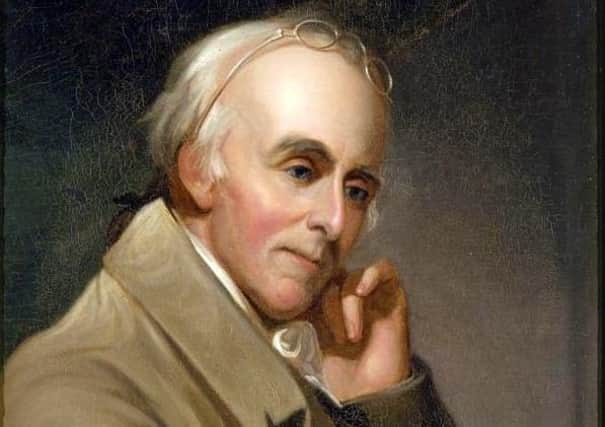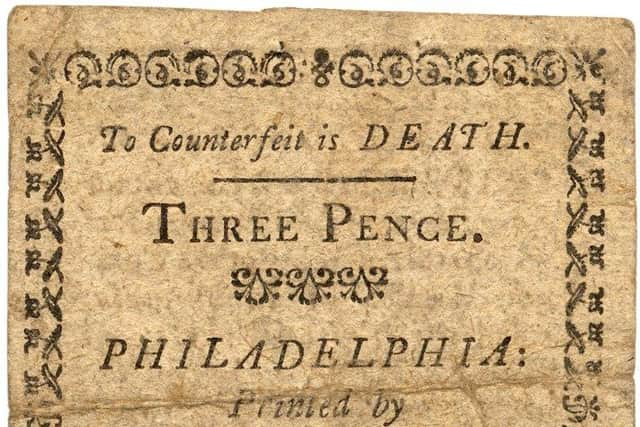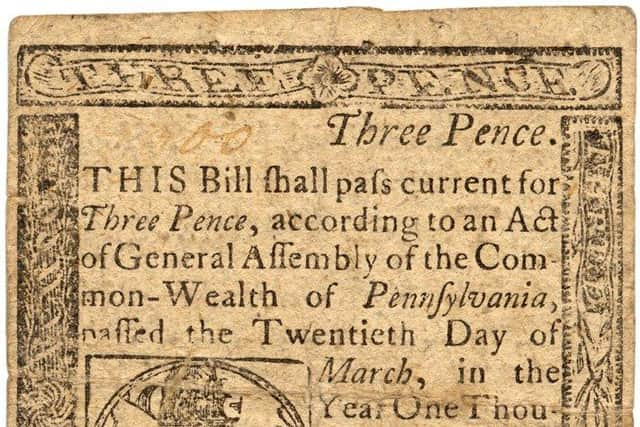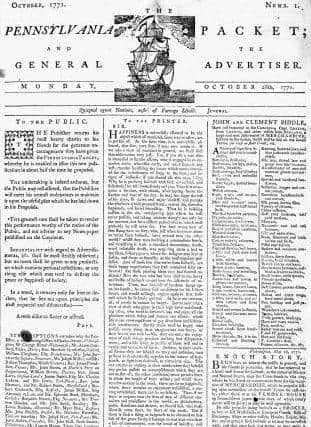How did a local man printed one of history’s most significant documents?


Beulah read Roamer’s recent page about Tyrone-born Robert Campbell who emigrated and made a significant mark on American history as a pioneer, fur trapper, explorer and entrepreneur.
“It’s good to see Tyrone getting a mention,” Beulah’s e-mail began, and as it was around the time of America’s July 4 Independence Day celebrations she added “the printer of the Declaration of Independence was John Dunlap from Strabane ”
Advertisement
Hide AdAdvertisement
Hide AdCoincidentally, last Thursday’s Retro pages in the News Letter went back in the archives to 2010, when Belfast’s Linen Hall Library hosted an exhibition entitled ‘Ulster Emigration to the USA’.


The then Linen Hall Librarian John Killen featured in an archive photograph holding a copy of the News-Letter from August 1776 (in those days it was hyphenated!) which reported on the historic Declaration.
There were also archive pictures from the Independence Day celebrations in Omagh’s Ulster American Folk Park, where Robert Campbell’s childhood home is now located, moved there brick by brick and meticulously rebuilt.
There were other wonderful archive photos in last week’s Retro pages from Independence Day Celebrations around Northern Ireland, down the years, including ‘the National Trust’s hidden gem in Strabane’ - Gray’s Printing Press - where July 4 was celebrated in 2009 with a re-enactment of John Dunlap printing the Declaration.
Advertisement
Hide AdAdvertisement
Hide AdThe ‘In Your Pocket’ Guide to Gray’s Printing Press at 49 Main Street, Strabane, recounts “it was at this 18th century printing business that President Wilson’s grandfather James, and John Dunlap, printer of the Declaration of Independence, learned their trade. Behind the press's original Georgian exterior is a museum with changing exhibits and local information including Strabane’s early role as the printing capital of Ireland.”


“The strange thing is,” Beulah’s e-mail continued, “the commander of the British troops at one of the final battles in the War of Independence, Sir Guy Carleton, was from the same street in Strabane as John Dunlap. I wonder if they knew each other. Strange that they were on opposing sides.”
More about Sir Guy in a week or two, but for now, the printer of the historic Declaration, which opened with Thomas Jefferson’s epic words - “We hold these truths to be self-evident, that all men are created equal, that they are endowed by their Creator with certain unalienable Rights, that among these are Life, Liberty and the pursuit of Happiness...”
It was only through young John Dunlap’s enterprise and craftsmanship that the document was printed quickly, for urgent distribution across the fledgling USA. John was born on Meeting House Street in Strabane in 1747. After what’s thought to be his introduction to printing in Gray’s, he was only 10-years-old when he went to Pennsylvania to work with his uncle William, a bookseller and printer in Philadelphia.
Advertisement
Hide AdAdvertisement
Hide AdWhen his uncle decided to study theology and become a clergyman, John, still a teenager, was left to look after the shop. He then ‘bought out’ his uncle, paying in instalments.


According to Dr Benjamin Rush, a close family friend, he saved on personal expenditure by living in the shop and sleeping on the floor underneath the counter. In 1771 John started a weekly newspaper, The Pennsylvania Packet and General Advertiser which soon became a very successful daily paper.
Pleased with his progress, John wrote a letter home urging more of his former neighbours to follow in his footsteps: “The young men of Ireland who wish to be free and happy should leave it and come here as quickly as possible. There is no place in the world where a man meets so rich a reward for conduct and industry.”
When the War of Independence started, Dunlap became an officer in Pennsylvania’s City Cavalry, where one of his responsibilities was personal bodyguard to George Washington at the battles of Trent and Princeton. Dunlap multi-tasked and continued with his printing business and in 1776 he got a commission from the new American Government which voted to secede from Great Britain on July 2.
Advertisement
Hide AdAdvertisement
Hide AdTwo days later the Congressmen approved the final wording of the Declaration of Independence and late on the night of the July 4 1776 a hand-written first draft was delivered to 29-year-old Dunlap’s printing shop.
He spent most of the night carefully setting up the metal type and printing several hundred copies. By dawn the so-called ‘Dunlap Broadsides’ - one of history’s most significant print runs - were ready for distribution.
The hugely enterprising Strabane-man also became property developer (and made a fortune!) and less well-known than his Declaration is the three pence paper money he printed for Pennsylvania and Virginia.
A copy of the Dunlap Broadside sold at auction for more than $8 million in 2000. His paper money, though, fetches much less, often less than $100 in circulated condition.
Advertisement
Hide AdAdvertisement
Hide AdJohn retired a very wealthy man at 48 years old, succumbed to the demon drink and “towards the close of his life he became intemperate so as to fall in the street” recounted his friend Dr Benjamin Rush.
Dunlap died on 27 November 1812 and was buried with full military honours at Christ Church, Philadelphia, Pennsylvania.
A message from the Editor:
Thank you for reading this story on our website. While I have your attention, I also have an important request to make of you.
In order for us to continue to provide high quality and trusted local news on this free-to-read site, I am asking you to also please purchase a copy of our newspaper whenever you are able to do so.
Advertisement
Hide AdAdvertisement
Hide AdOur journalists are highly trained and our content is independently regulated by IPSO to some of the most rigorous standards in the world. But being your eyes and ears comes at a price. So we need your support more than ever to buy our newspapers during this crisis.
With the coronavirus lockdown having a major impact on many of our local valued advertisers - and consequently the advertising that we receive - we are more reliant than ever on you helping us to provide you with news and information by buying a copy of our newspaper when you can safely.
You can also enjoy unlimited access to the best news from across Northern Ireland and the UK by subscribing to newsletter.co.uk
With a digital subscription, you can read more than five articles, see fewer ads, enjoy faster load times, and get access to exclusive newsletters and content. Visit https://www.newsletter.co.uk/subscriptions now to sign up.
Thank you